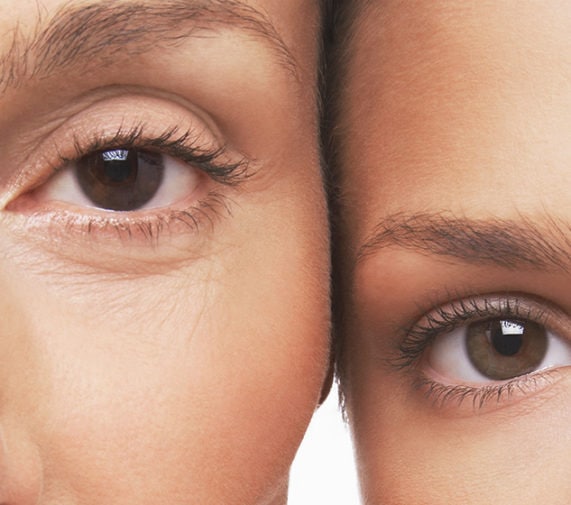Retinol is the gold standard of anti-aging skin care. Sure there are hundreds of exotic and technologically advanced sounding ingredients hyped by the beauty industry. But retinol is more than hype. It is a legitimate superhero addition to your beauty regimen. It’s backed by decades of research and a myriad of published studies that prove it works.
What It Is
Retinol and retinoids (including retinoic acid and retinyl palmitate) are vitamin A derivatives. Over the counter (OTC) retinol typically only has a 0.5% to 2% concentration. This is in comparison to the stronger Retin-A (also called Tretinoin) you get from the dermatologist via a prescription. Retin-A is indeed a powerhouse, but it can make your skin irritated, red, flaky, itchy and extremely dry. It doesn’t work if your skin can’t tolerate it and you don’t use it, right?
OTC retinol may take longer to see results than a prescription Vitamin A, but it has emollients to make it less irritating to your skin.
What Retinol Does
As part of a topical skin care regimen, retinol addresses a myriad of visible signs of aging. These include wrinkles, fine lines, loss of firmness, loss of collagen, sun damage and enlarged pores. It can also function as an antioxidant, to help with free-radical damage. It speeds up your cellular turnover revealing fresher, more youthful skin.
Packaging makes a big difference when it comes to retinol. If the ingredient becomes unstable, it can be ineffective. So first things first—purchase OTC retinol that comes in opaque, air-restricting packaging. Store the product away from light.
How To Use Retinol
If you’re a first-time retinol user, consider talking with your dermatologist beforehand. Tell the doctor what other skin care products you’re using. You may not want your other products to be too aggravating. This includes salicylic, glycolic, vitamin C and other acids or manual exfoliants. A 2015 study looked into retinoids combined with alpha hydroxy acids (AHAs). The study reported no adverse events or tolerability issues, but it’s always best to check on how your personal skin responds to a mix of ingredients.
Many people first add retinol to their skin care regimen in their 30s or even mid-20s. It’s often suggested to let your skin build up a tolerance to retinol. Increase the frequency of use and the amount you apply as time goes on. Starting with a pea size amount, for example, may be just what the doctor (literally!) ordered. Are you the sensitive type? Ask your doctor about time-release formulations as a possible option.
Retinol makes the skin more sensitive to damage from ultraviolet light, so it’s better to use it at night. If you must use it during the day, it’s essential to protect your skin from the sun by using sunscreen and other sun protection. The Environmental Working Group expresses concern about Retinyl palmitate added to sunscreen. As they believe that it may speed up the growth of skin tumors and lesions. Wash your face and apply your eye cream. When skin is dry, apply retinol, followed by moisturizer. Apply sunscreen separately.
Then watch for the miracle of everlasting youth. Well, not quite, but retinol is one ingredient proven to be worth the investment.
twistup
Love OrangeTwist? Join our twistup membership and receive a $100 gift card today!


